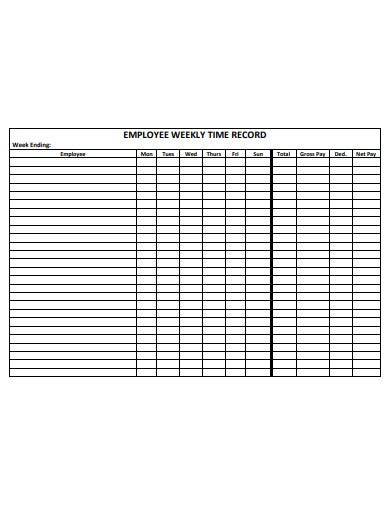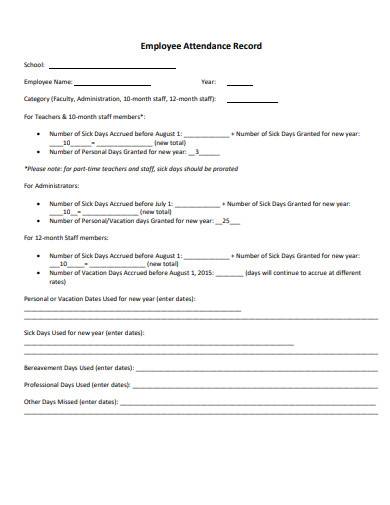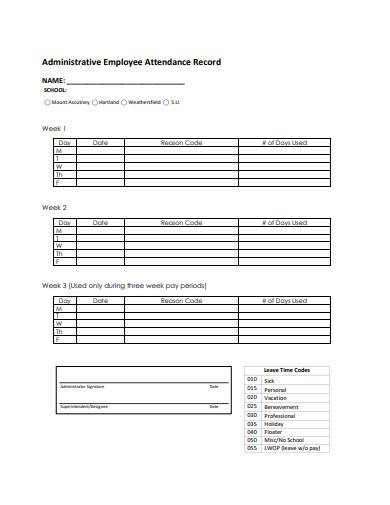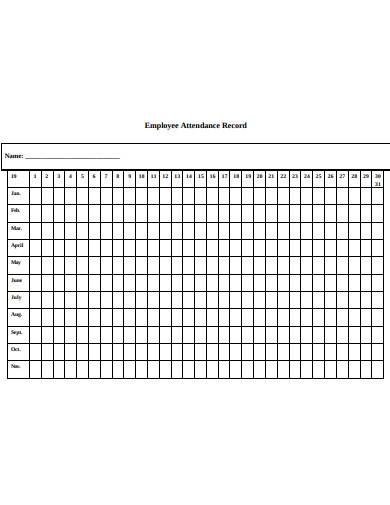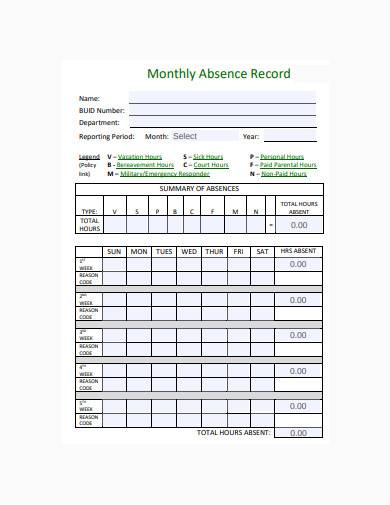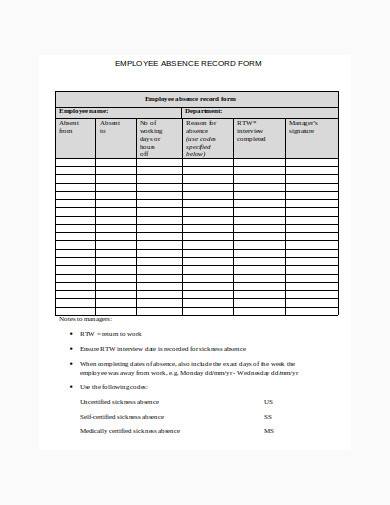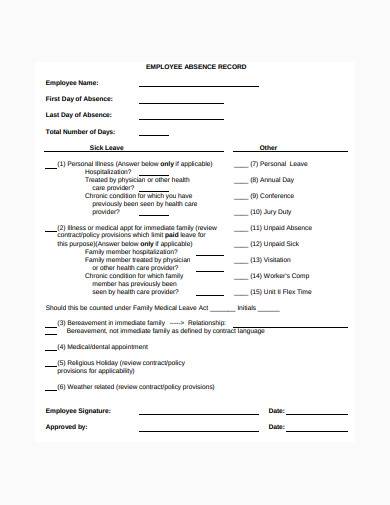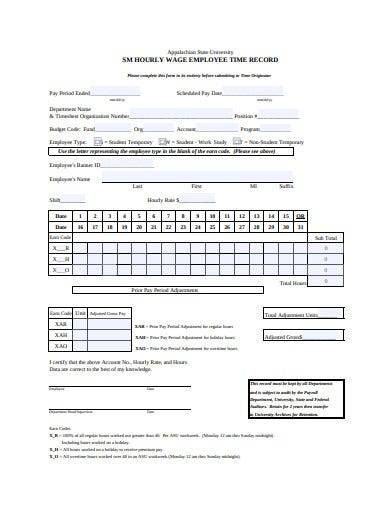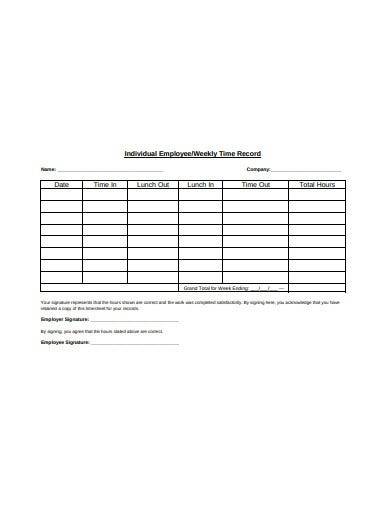Documentation is a matter of great concern in the human resource department. Every individual that comes under an organization’s wing has comprehensive details about their personal and professional profile. Safekeeping employee records is an important role that every business should follow because from it being a legal requirement, it also serves many practical purposes. Learn about this below.
FREE 17+ Employee Record Samples
1. Employee Records Template
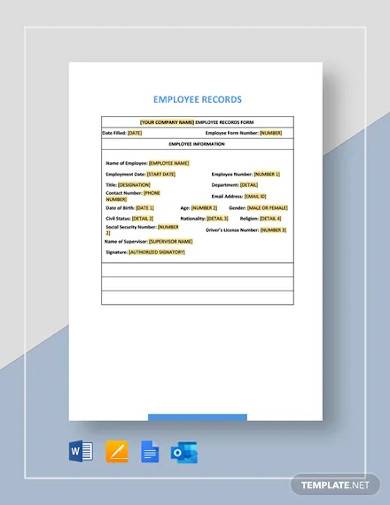
2. Employee Time Record Template
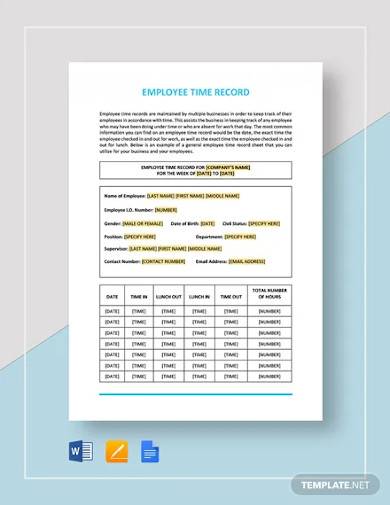
3. Free Employee Statutory Holiday Record Template

4. Free Employee Pay Slip Record Template
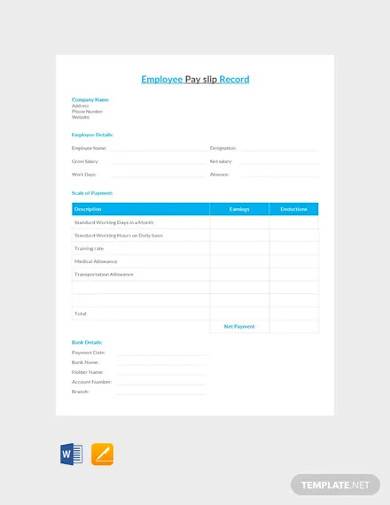
5. Free Employee Record Web Counselling Template
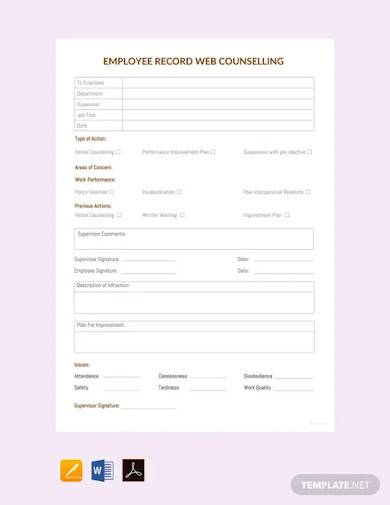
6. Free New Employee Record Sheet Template
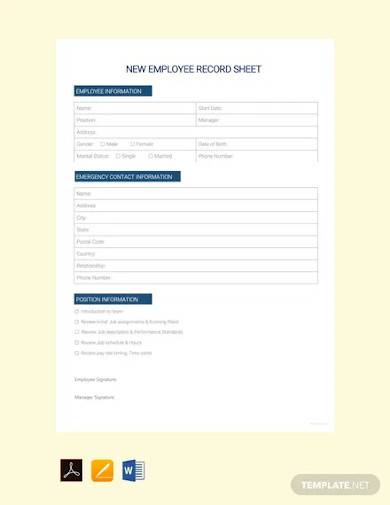
7. Free Individual Absence and Lateness Record
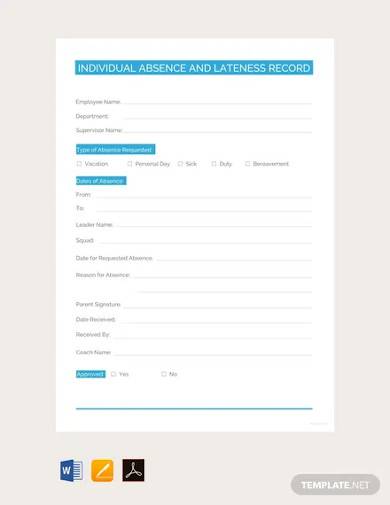
8. Employee Weekly Time Record
9. Employee Time Record Template
10. Employee Attendance Record Template
11. Employee Attendance Record in Word
12. Administrative Employee Attendance Record
13. Blank Employee Attendance Record
14. Sample Monthly Absence Record
15. Employee Absence Record Form
16. Simple Employee Absence Record Template
17. Hourly Employee Time Record Sample
18. Sample Weekly Time Record
What Is an Employee Record?
An employee record contains all personal and work-related details about an employee in an organization. This is usually composed of several different documents that reflect an individual’s personal profile, work history, job performance, compensation, employment agreements, and other files that should belong to the record compilation. This is an important human resource file that they’re mandated to keep.
Why Keep Accurate Employee Records
According to Chron, it’s advisable to keep all employee records for three years after their resignation or termination before discarding them. Imagine the bulk of papers and system files they have if they need to keep still records of current and previous personnels on their compilation. It might sound like an unnecessary hassle, but it’s for a purpose. Aside from satisfying a legal requirement, here are some reasons why it’s important to keep employee records:
1. It prioritizes healthy and safety. Your record doesn’t only contain job-related details but also their medical history as well. This helps employers know how to make the workplace comfortable and what information they take note of when an emergency occurs.
2. It tracks employee performance. Timesheets and attendance sheets help the company an employee’s behavior and efficiency in the workplace. An account of their productivity will also help assess if they’re delivering the results their company wants them to produce.
3. It helps keep a connection with previous employees. When you have employee files with you, it’s easier to recognize past associates and potential talents to invite you again for another job opportunity.
How to Set Up an Employee Record
Here are useful guidelines on how to set up an employee record:
1. Gather Personal Details
Where else should your record begin other than your employee’s personal details? This is one of the most obvious parts of your record and the easiest information to get. The personal details should contain the employee’s name, age, date of birth, marital status, nationality, background education, address, and relevant identification numbers. All of these should be available on the employee’s resume or curriculum vitae during the recruitment. However, if you want to ensure that the details are right, you can have them fill up an application form or a personal information form to keep as part of their record.
2. Have Contact Details
Aside from their personal details, you should know how and where to contact your staff whenever you need to. This is why you should include your employee’s contact details on your records for this purpose. You should also include their contact person in case an emergency arises. Complete contact information should have a home and mobile phone number, emergency person’s name and contact details, and email address. Make it a point to urge your employees to update their contact details whenever they change into new digits to keep your record updates. This way, you won’t be stuck with numbers that are already unavailable.
3. Specify Job Details
It’s apparent that you need to include the details of their job in the organization besides their personal and contact details. Your employee record won’t be complete without information about what they do. This allows the company to take note of the responsibilities they expect the employee to fulfill. This information on your document should comprise the employee’s job description, skills and expertise, handled tasks, and supervised project plans. Anything that should reflect an individual’s role in the company should be present here.
4. State Employment Information
Their employment history is also a crucial component of their record in the company. Your document should not fail to mention their previous roles and organizations before they landed in your office. Their recommendation letters from past employers and colleagues would make a good supplemental document to this information. Furthermore, this should include their employment category, status, first and last date of employment, work schedule, and leaves’ history. These details are all relevant to completing an employee’s work profile.
5. Include Payroll Activities
It’s mandatory for a company to keep a record of its employee’s payroll activities. This includes their working hours, paid bonuses, timesheets, deductions, insurances, taxes, and other information that should reflect on their payroll information. This is according to the Fair Labor Standards Act. You must keep this information for at least three years. There’s no doubt this deserves a space on your employee’s records. Be sure to store the data of their attendance and salary on a system that you can easily access.
FAQs
What are the different types of employee records?
The different types of employee records are hiring documents, personal files, employee agreements, job performance, compensation details, and post-employment files.
What are the different confidential employee records?
The confidential employee records that the HR should keep are: Form I-9s Medical records Investigation and disciplinary records
What are some ways on how to store employee records?
The following are some ways on how to store employee records:
- Paper-based records
- On-premise HR system
- Cloud-based HR software
- Manual electronic records
Filling up a cabinet of file storage and investing in software that can efficiently keep your staff’s records is a small price to pay compared to going against the mandate of the law and missing out on its many advantages. It also helps if you have a ready-made document that can help you manage these never-ending files. Grab any of our employee record templates today.
Related Posts
FREE 10+ Sample Employee Details Forms in MS Word PDF
FREE 8+ Sample Disciplinary Action Forms in PDF MS Word
FREE 9+ Sample Attendance Planners in PDF MS Word
FREE 8+ Sample Attendance Calendar Templates in PDF MS Word
FREE 26+ Daily Log Templates in MS Word
FREE 9+ Sample Employee Counseling Forms in MS Word PDF
FREE 9+ Payslip Templates in PDF MS Word
FREE 8+ Employee List Samples in PDF
FREE 10+ Leave Schedule Samples & Templates in PDF MS Word ...
FREE 9+ Medical Form Samples in MS Word PDF
FREE Payroll Tips from a Tax Professional
FREE 9+ Disciplinary Memo Templates in Google Docs MS Word ...
FREE 50+ Sample Medical Forms in PDF MS Word
FREE 10+ Performance Documentation Samples & Templates in MS ...
FREE 11+ Sample Employee Forms in MS Word PDF

